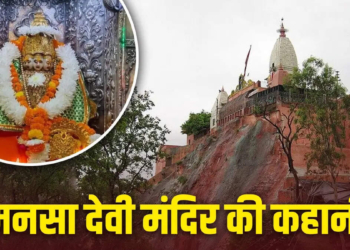Ganendranath Tagore (English: Gaganendranath Tagore, born- 17 September, 1867, Calcutta, West Bengal; died- 1938) was a famous Indian cartoonist. He was the elder brother of Abanindranath Tagore and nephew of Rabindranath Tagore. Gaganendranath Tagore and his brother Abanindranath were pioneers among the modern artists of India. They introduced foreign colors to the world of Indian painting and introduced it to every home. Gaganendranath was one of the pioneers of the Indian cartoon world. He achieved mastery in painting.
Tagore was born on 17 September 1867 in the Thakur family of Jorasanko (Tagore residence) in Calcutta (now Kolkata) in British India. The creativity of this family gave a new form to the culture of entire Bengal. Gaganendranath Tagore’s father Gunendranath Tagore was the grandson of Crown Prince Dwarkanath Tagore. Dwarka played an important role in the progress and development of Bengal. If seen, Gaganendranath did not receive any kind of school education nor did he study like a learned person, but he got training from watercolor painter Harinarayan Bandopadhyay. After this he kept maturing in art.[1]
In 1907, Gaganendranath Tagore along with his brother Abanindranath founded the ‘Indian Society of Oriental Art’. After this, his magazine ‘Rupam’ was published, which was liked by the people. Between 1906 and 1910, Gaganendranath Tagore studied Japanese brush technique and the influence of Far Eastern art in his work. The curiosity to learn something gave him special knowledge. From the biography of world poet Rabindranath Tagore ‘Jeevan Smriti’, his determination to do something and his desire to learn took him to the top. After this, Gaganendranath Tagore changed his direction and stepped towards the satirical world.
In 1917, some cartoons of Gaganendranath Tagore were published in ‘Madder Review’. This was a new turn in his life. At that time, his cartoons appeared in a series of books, such as ‘Play of’, ‘Realm of the Absurd and Reform Seems’. From 1915 to 1922, the world got to see the best cartoons of Gaganendranath. His cartoons depicted the irony of that time in great detail. His cartoon ‘Peace Restored in Punjab’ (Punjab me aman ki wapasi), based on the painful Jallianwala Bagh incident in Punjab, was an incredible courage of a cartoon artist and the feeling of not tolerating the atrocities being committed on society left an impression on the contemporary audience. Gaganendranath Tagore’s cartoon series ‘The Stream’ is a milestone.[1]
Exposure of his art practices across the world led to the creation of his original style of painting. On one hand, Gaganendranath Tagore was inspired by Japanese wash technique and on the other hand, he was inspired by the aspects of European art practices like pictorialism, futurism and expressionism. Despite absorbing the best of his vision, his vision and technique were very individual. Gaganendranath’s great sense of humor and satire found expression in some important caricatures whose primary purpose was to comment on the decay of social and moral values under the influence of colonial rule. His satire also pointed to hypocrisies and contradictions within society. He is also credited with establishing the Jorasanko (Tagore residence) theatre. He was actively involved in designing stage installations and costumes for various plays. His major art works reflect the significant influence of this theatre.[2]
Partha Mitter says about Gaganendranath Tagore- “The Bengali culture lost due to the influence of the West was the main subject of everyone’s satire. So how could Gaganendranath back away from it. His extraordinary paintings were collected in three chapters after 1917. They are-
Virup Bajra (Play of Opposite)
Neo Hullod (Reform Seems)
Realm of Awesome
Apart from this, he also made some political caricatures, although his social satire had so much truth that any unjust or oppressor would get hurt by the arrows of satire. He used to describe the rotten customs of society in a satirical manner. A glimpse of western civilization was visible in them. Between 1920 and 1925, he made new experiments in the world of modernist painting. Therefore, Partha Mitter says that before the 1940s, he was the only Indian painter who used language in a very interesting way. The duet of words with his cartoons was like a sore. Book: His relationship with ‘Natyashala’ was very deep and unbreakable. He had immense love and respect for children. He also wrote a book named ‘Wonder Bahadur’ for children.
Gaganendranath Tagore died in 1938. He was a victim of paralysis. His memory and passion to remove social filth from society is still clearly visible in his paintings and sketches. Even after many years of his death, he is still considered an authentic experimental painter. The Indian Postal and Telegraph Department issued a commemorative postage stamp on his 101st birth anniversary.[1]










